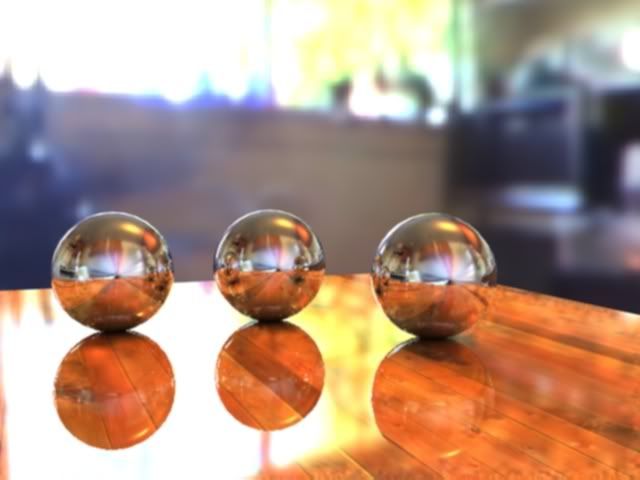The BRAWL² Tournament Challenge has been announced!
It starts May 12, and ends Oct 17. Let's see what you got!
https://polycount.com/discussion/237047/the-brawl²-tournament
It starts May 12, and ends Oct 17. Let's see what you got!
https://polycount.com/discussion/237047/the-brawl²-tournament
WIP HDRI Lighting
Before i start i'd like to thank pete draper for making the tutorial i used available.
Below is what i've been working on its for a module i'm studying at university, which is Lighting Techniques.
Basically for the module you can download a scene with or without textures as long as its not got a lighting solution in it. Your ok to use the scene for your assignment.
For example i could use Lighting Challanges scenes.
So anyway i went through the pete draper tutorial, and found it rather interesting so i decide to do my own but base it a little on the tutorial, i used the background image from the tutorial which is in the image below.

Any crits would be great cheers.
Below is what i've been working on its for a module i'm studying at university, which is Lighting Techniques.
Basically for the module you can download a scene with or without textures as long as its not got a lighting solution in it. Your ok to use the scene for your assignment.
For example i could use Lighting Challanges scenes.
So anyway i went through the pete draper tutorial, and found it rather interesting so i decide to do my own but base it a little on the tutorial, i used the background image from the tutorial which is in the image below.

Any crits would be great cheers.
Replies
I've lowered the reflection of the raytrace on the table to 10, also added the table texture to the specular map at 10 also.
results below
I lowered the brightness and contrast in the exposure control and the result.
the wood seems a mirror with a wooden texture,there is nothing that indicates that it is wood besides teh difuse texture
[/ QUOTE ]
Maybe it's newly polished and waxed wood? :O I have wood that looks like that all around my house. Not everything has to be more than a year old...
http://flickr.com/photo_zoom.gne?id=1323846037&size=l
http://flickr.com/photos/lipglossjunkie/142517763/
http://flickr.com/photos/allisonspics/1087374138/in/photostream/
http://flickr.com/photo_zoom.gne?id=1047189424&size=l
http://flickr.com/photo_zoom.gne?id=305574497&size=o
vs flat, ultrashiny surfaces.
http://flickr.com/photos/squishedfrog/190368429/
http://flickr.com/photos/wirednerd/258191228/
The key here are really just keeping the reflections diffuse on the wood and some suble differences in how reflective the surface is...
Also, stop using stock 3ds max textures, you can come up with something better on your own.
just need to get shadows in the scene now.
The problem werent my reflections, it was the HDRI map the light from the window was causing it.
[/ QUOTE ]
Well yes, kind of, the HDRI you use was basicly reflecting straight and directly from the table. Realisticly, woods will not reflect things that way. Which is why everyone were suggesting you to add some texture maps to your refrectivity, bumps/normals and specularity channel. That is to help break down those high lights.
I think it looks wrong as there is no light bouncing off the balls and hitting the table.
The problem werent my reflections, it was the HDRI map the light from the window was causing it.
just need to get shadows in the scene now.
[/ QUOTE ]
This seems to be the most believable image out of the bunch so far for me. Of course there are some highly super slick polished wood surfaces out there, but how many really don't have some level of imperfections. When trying to sell a 3d image as real the first thing you have to do is toss out the ideal of every line, corner, surface, etc. being absolutely perfect. This perfect world you display is instantly perceived as fake to most viewers and is a dead give away for 3d.
Try introducing some nuances into your maps such as discoloration, scratches, dust, smudge marks, etc. And make sure that your details are echoed through the appropriate maps to ensure surface fidelity. Give that a go with the settings in the image above and I think you'll find the image much more believable.
In real life, everything reflects light "unevenly." Take a look at this image.
http://flickr.com/photos/benny_lin/253813019/
http://flickr.com/photos/benklemm/32652851/
Take a close look and you'll see that the white high light is not 1 single mass, but they are interupted with smaller areas without reflection everywhere... That is what happen in real world, and is exactly what you have to try recreate digitally. You control those reflectivity with grey scale image, breaking apart your high-light.
Try to learn what "you" can do with HDRI. Not just what HDRI can do for you. That's the real point of this whole thing.
This seems to be the most believable image out of the bunch so far for me.
[/ QUOTE ]
I hope you're joking, as there is no type of common furnish that reflects so little and yet appears so perfectly applied.
If anything, ppenguin, gave some good references. If you're aiming for newly polished wood, what you had fit well. Otherwise ppenguin gave good ref. for under-polished wood.
if it looks 'perfectly realistic' its boring.
[ QUOTE ]
This seems to be the most believable image out of the bunch so far for me.
[/ QUOTE ]
I hope you're joking, as there is no type of common furnish that reflects so little and yet appears so perfectly applied.
[/ QUOTE ]
Actually, I think the ammount of reflection is very dependent of the lighting and environment, not just the reflective property of the surface. To me, it looks like the most convincing of all of them posted. Either way at the end of the day there are all sorts of visual possibilities that can be found in the real world.